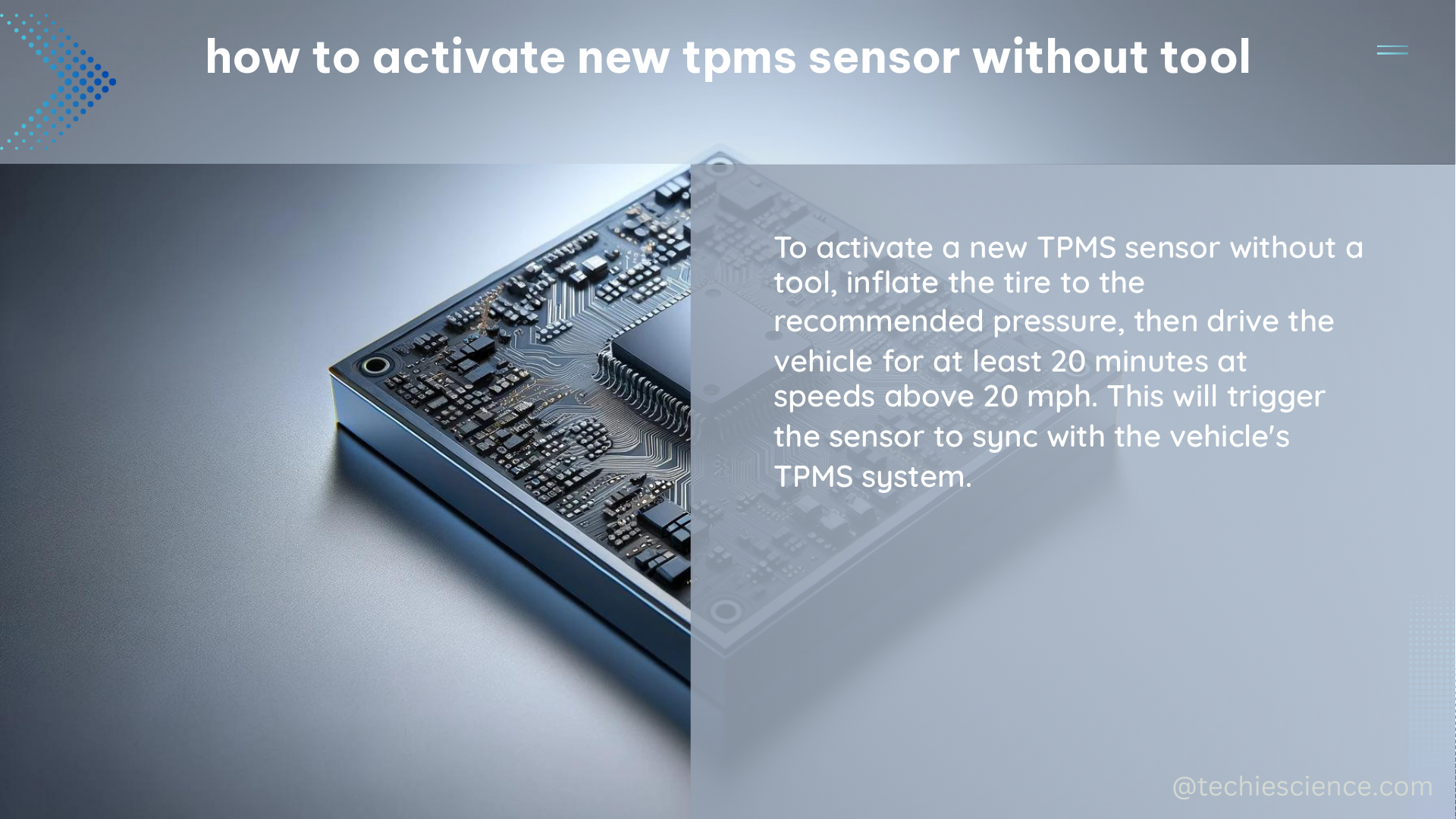Activating a new Tire Pressure Monitoring System (TPMS) sensor without a specialized tool can be a cost-effective and convenient solution for various vehicle owners. This comprehensive guide will walk you through the step-by-step process to activate new TPMS sensors on your Ford, Chevrolet, GMC, Buick, or Cadillac vehicle, providing you with the technical details and DIY tips to ensure a successful outcome.
Ensure Proper Tire Pressure
Before starting the activation process, it is crucial to ensure that all tires are inflated to the recommended pounds per square inch (psi) as specified by the vehicle manufacturer. This step is essential for the TPMS system to function correctly and provide accurate readings.
Access the TPMS Learning Mode

The process of accessing the TPMS learning mode varies depending on the age of your vehicle. Follow the appropriate steps for your model:
For 2017 and Newer Models
- Start with the ignition in the off position.
- Press and release the brake pedal.
- Turn the ignition from off to on three times, ending in the on position.
- Press the brake pedal again for about 2 seconds and release.
- Turn the ignition back to off, then turn the ignition from off to on three times, ending in the on position again.
For Older Models
- Press and release the brake pedal.
- Turn the ignition on and off six times, ending in the on position.
Activate the TPMS Sensors
The method of activating the TPMS sensors depends on whether they are pressure-activated or non-pressure-activated.
For Pressure-Activated Sensors
- Release air pressure in each tire until the vehicle’s horn honks, indicating that the TPMS sensor has been activated.
- Start with the left front tire and proceed clockwise around the vehicle (left rear, right rear, right front).
- The horn honk typically occurs within 10-15 seconds of releasing air pressure, but it may take longer in some cases.
For Non-Pressure-Activated Sensors
For non-pressure-activated TPMS sensors, you may need to use a specialized tool to activate them. These sensors do not respond to air pressure changes and require a specific activation process.
Confirm Activation
Once you have gone through the steps to activate the new TPMS sensors, the vehicle’s onboard computer should recognize the new sensors. You can confirm this by checking the dashboard display, which should indicate that the TPMS sensors have been learned or that the training process is complete.
Technical Specifications
TPMS sensors utilize low-power radio frequency (RF) signals to communicate with the vehicle’s onboard computer. These sensors are typically mounted on the valve stem inside the tire and monitor both tire pressure and temperature.
The communication protocol between the TPMS sensors and the vehicle’s computer is proprietary and varies by manufacturer. This means that the activation process may differ slightly depending on the make and model of your vehicle.
DIY Tips
- Always double-check the recommended tire pressure for your specific vehicle model to ensure accurate TPMS readings.
- Be patient when releasing air pressure, as it may take several seconds for the horn to honk, indicating sensor activation.
- If you encounter any issues during the activation process, consult your vehicle’s owner’s manual or contact the manufacturer’s customer service for assistance.
References
- Forum post on programming TPMS sensors without a tool
- Forum post on resetting TPMS without a resetting tool
- Forum post on resetting TPMS with no learning tool
- Forum post on programming TPS sensor without a tool on a 2017 LTZ
- YouTube video on reprogramming TPMS sensors without tools
By following the step-by-step guide and adhering to the technical specifications and DIY tips provided, you can successfully activate new TPMS sensors without the need for a specialized tool. This method is particularly useful when installing winter wheels/tires with sensors already installed or when performing a tire rotation.

The lambdageeks.com Core SME Team is a group of experienced subject matter experts from diverse scientific and technical fields including Physics, Chemistry, Technology,Electronics & Electrical Engineering, Automotive, Mechanical Engineering. Our team collaborates to create high-quality, well-researched articles on a wide range of science and technology topics for the lambdageeks.com website.
All Our Senior SME are having more than 7 Years of experience in the respective fields . They are either Working Industry Professionals or assocaited With different Universities. Refer Our Authors Page to get to know About our Core SMEs.